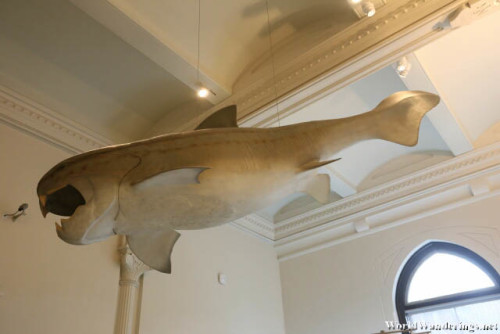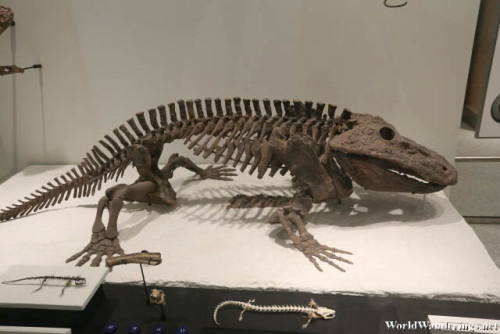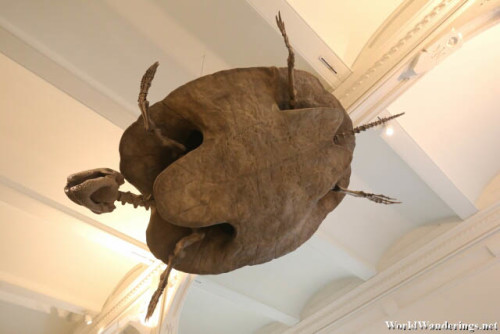I must have gone through the halls the other way around. I was done admiring the impressive dinosaur fossils on display at the American Museum of Natural History and before that was the Hall of Advanced Mammals, but now, I arrived at the last or it is the first hall – the Hall of Vertebrate Origins. As the name implies, this hall focuses on the fossils of extinct animals which are even earlier than the dinosaurs. All life on earth supposedly came from the seas from single celled animals to more complex ones as the millennia passed. Eventually, life evolved to have fish who became kings of the sea.
Like the dinosaurs, the fish grew to monstrous proportions, a lot of them even growing armour and were truly fearsome creatures. The seas must have been rich with nutrients for them to grow so large. The fish didn’t stop evolving, some of the fish learned to live outside the water, slowly taking they first steps out of water but never leaving it totally. They evolved to breathe from the air but still require the water. These are the amphibians and they also grew large. Some of the fossils here are also fossils of amphibians.
The problem of amphibians is that they can’t conquer the earth without laying eggs in the water. Some of the amphibians evolved further and brought the water in their eggs. Their skin became drier and tougher – these were the reptiles. As you know, some of these reptiles grew to monstrous sizes and became the famous dinosaurs which ruled the earth for millions of years. These dinosaurs not only rules the surface but also the seas. It is really amazing to see the history of life on display. The quality of the fossils is really something else and it is amazing they show this to the public for free.
[xmlgm {http://www.worldwanderings.net/kml/AmericanMuseumofNaturalHistory.kmz} zoom=19]


